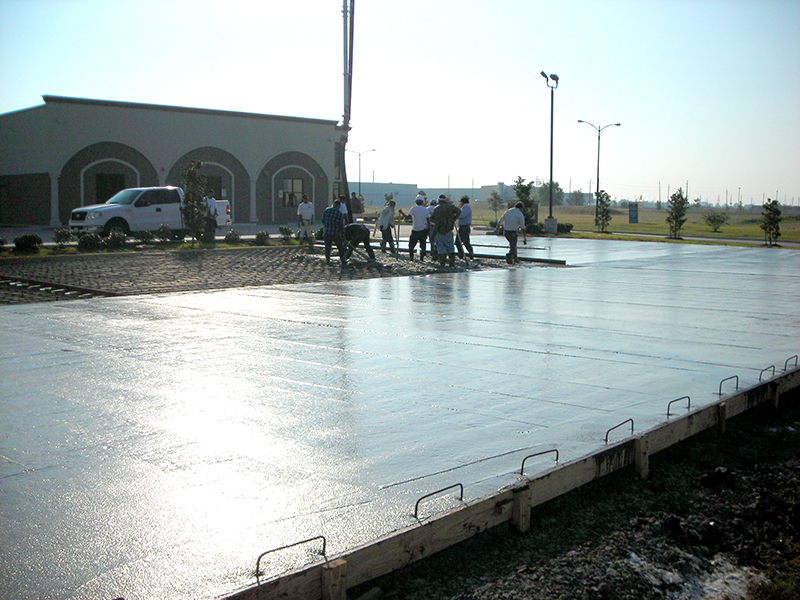 The use of concrete began much earlier than many people realize. The ancient Romans used concrete to build structures that still stand today. The Colosseum, the Pantheon and many of the Roman aqueducts and bridges were built using concrete. However, even before the Romans, Bedouins in Syria and Jordan were using concrete to line underground cisterns, build homes and lay concrete floors. After the Roman Empire fell, concrete all but disappeared until the 14th century. The use of concrete slowly resumed during the next few centuries. The 19th century saw advances that increased the usefulness of concrete. In 1824, an English mason named Joseph Aspdin patented Portland cement, and in 1849, Joseph Monier invented reinforced concrete.
The use of concrete began much earlier than many people realize. The ancient Romans used concrete to build structures that still stand today. The Colosseum, the Pantheon and many of the Roman aqueducts and bridges were built using concrete. However, even before the Romans, Bedouins in Syria and Jordan were using concrete to line underground cisterns, build homes and lay concrete floors. After the Roman Empire fell, concrete all but disappeared until the 14th century. The use of concrete slowly resumed during the next few centuries. The 19th century saw advances that increased the usefulness of concrete. In 1824, an English mason named Joseph Aspdin patented Portland cement, and in 1849, Joseph Monier invented reinforced concrete.
Concrete & Curing – All About Concrete
Concrete is a building material that consists of cement, gravel, sand and water. The water is added to the dry ingredients when the concrete is ready to be used. After the concrete is properly mixed, it is poured into forms which hold the desired outline. The surface can then be leveled and smoothed with concrete-working tools.
Modern concrete mixes are often amended with additional materials to strengthen or alter the finished product to make it more suitable for an intended use. Concrete has a high compression strength but a low tensile strength, meaning it does not bend or twist well. Rebar or metal mesh is often used within the concrete to add tensile strength and prevent premature cracking and breaking. The compressive strength of concrete is measured in pounds per square inch, commonly referred to as psi.
Ambient temperature is an important consideration with concrete installation. Ideal conditions require temperatures between 50 degrees and 90 degrees, with 75 degrees being optimum. Freshly poured concrete that freezes or dries too quickly will never achieve its maximum strength and will be subject to premature cracking and failure.
Concrete & Curing – About Concrete Curing
For concrete to achieve its maximum strength, it needs to cure correctly. Concrete may reach its desired compressive strength quickly, but it can continue to cure and harden for years.
When water is added to the dry concrete mix, a chemical process called hydration begins. Curing is the effect of hydration. For hydration to continue, the concrete must remain damp. A concrete installer will keep the water damp by using a water hose equipped with a spray nozzle on a fine or mist setting. Plastic sheathing is often used to trap moisture and slow evaporation. Industry standards give concrete 28 days to achieve its expected compressive strength, but this is an arbitrary number and concrete can reach its compressive strength much sooner. Within hours, concrete can set to a firmness that will allow being walked on. Concrete can reach 75 percent of its compressive strength within 7 days. The slower the concrete cures, the harder and more stable it will be.
Contact Alpha Paving for Your Concrete Needs
Alpha Paving is an award-winning company offering an extensive range of paving and concrete-related services to customers throughout Austin and most of Central Texas. Alpha Paving services include concrete driveway, concrete parking lots, concrete curbing, concrete ramps, concrete sidewalks and ADA concrete installation. We routinely provide services to municipalities, schools, apartment complexes, restaurants, hotels, business parks, retailers, airports, churches, industrial facilities and HOAs. Our crews deliver exceptional results at affordable rates. If you would like a free quote, you can either submit the online form or call (512) 677-9001.




